Intel Z170 LGA-1151 Motherboard Roundup
ASRock, MSI and Supermicro offered up their Z170 Extreme6, Z170A Gaming M7 and C7Z170-SQ (respectively) for our initial Z170 motherboard roundup.
Why you can trust Tom's Hardware
Benchmarks, Power, Heat And Efficiency
We’re not able to use our reference test system’s LGA 2011-v3 processor or its motherboard to test LGA 1151 platforms, nor could we expect much memory overclocking from its DDR4-2400 quad-channel kit. But the rest of the system remains valid for this platform’s benchmarking and overclocking needs.
Test System Configuration
| Hardware | |
|---|---|
| CPU | Intel Core i7-6700K (Skylake): 4.0-4.2 GHz, 8MB Shared L3 Cache, LGA 1151 |
| RAM | G.Skill F4-3600C17Q-16GVK 4x 4GB (16GB) DDR4-3600 Kit |
| Graphics | Gigabyte GV-N970G1 GAMING-4GD: GeForce GTX970 1178-1329 MHz GPU, GDDR5-7012, Maximum Fan for Thermal Tests |
| Sound | Integrated HD Audio |
| Network | Integrated Gigabit Networking |
| Software | |
| Graphics | GeForce 353.30 |
| Chipset | Intel INF 10.0.27 |
Synthetic Benchmarks
3DMark and PCMark show little performance difference between the three LGA 1151 motherboards in today’s test, but the Z170 Extreme6 does have a small glitch in Encoding/Decoding turnaround from Sandra Cryptography.

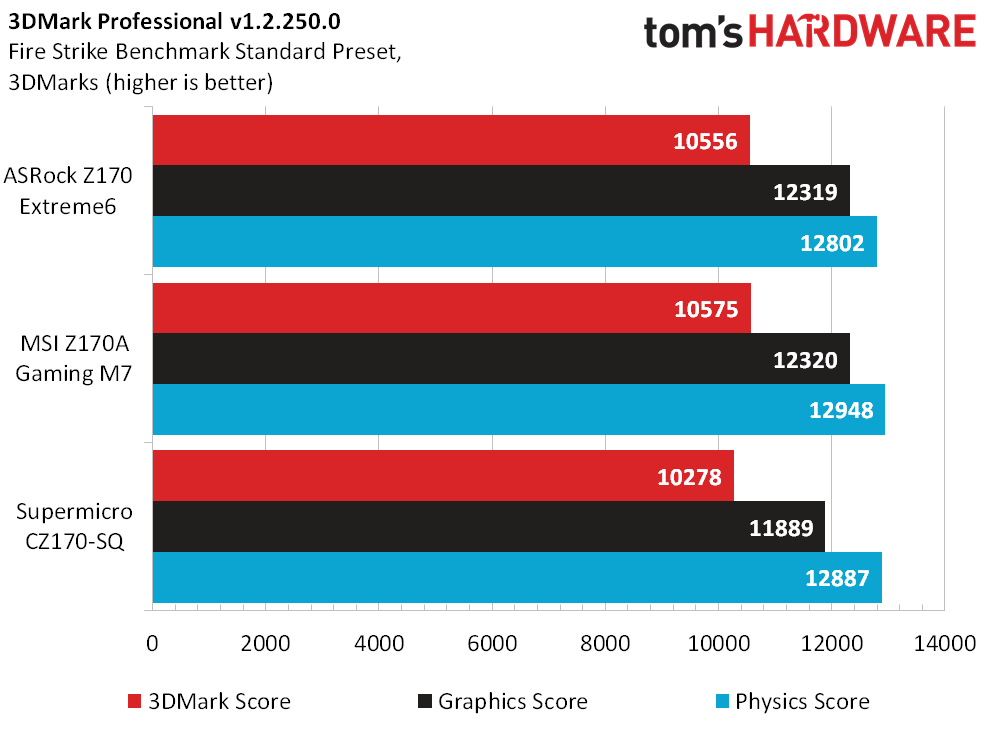
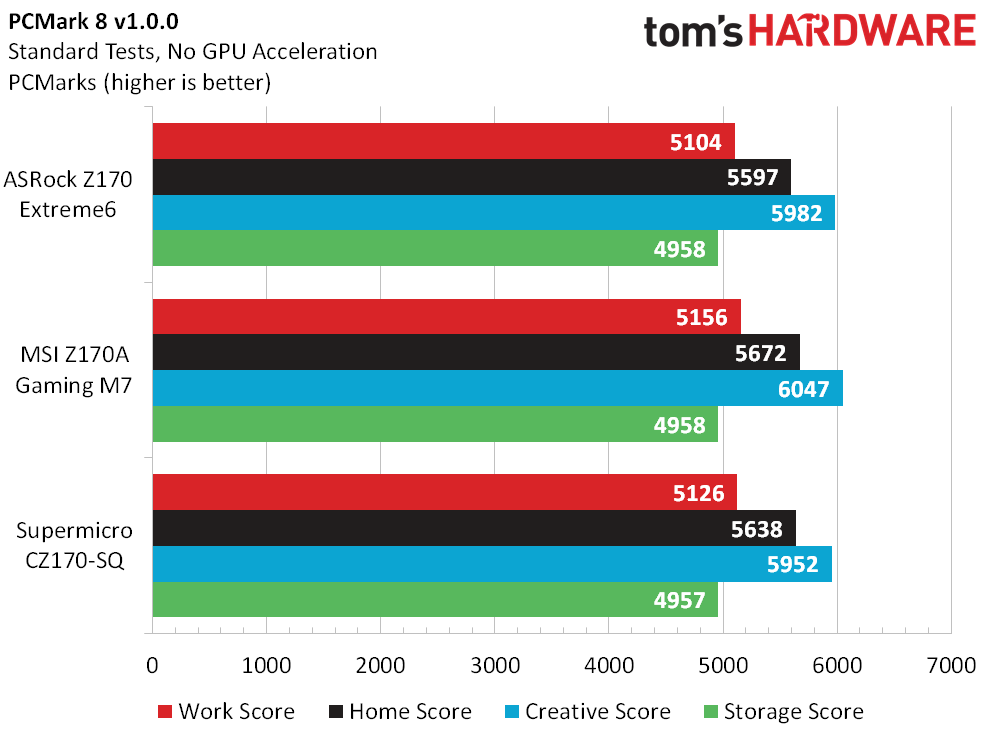
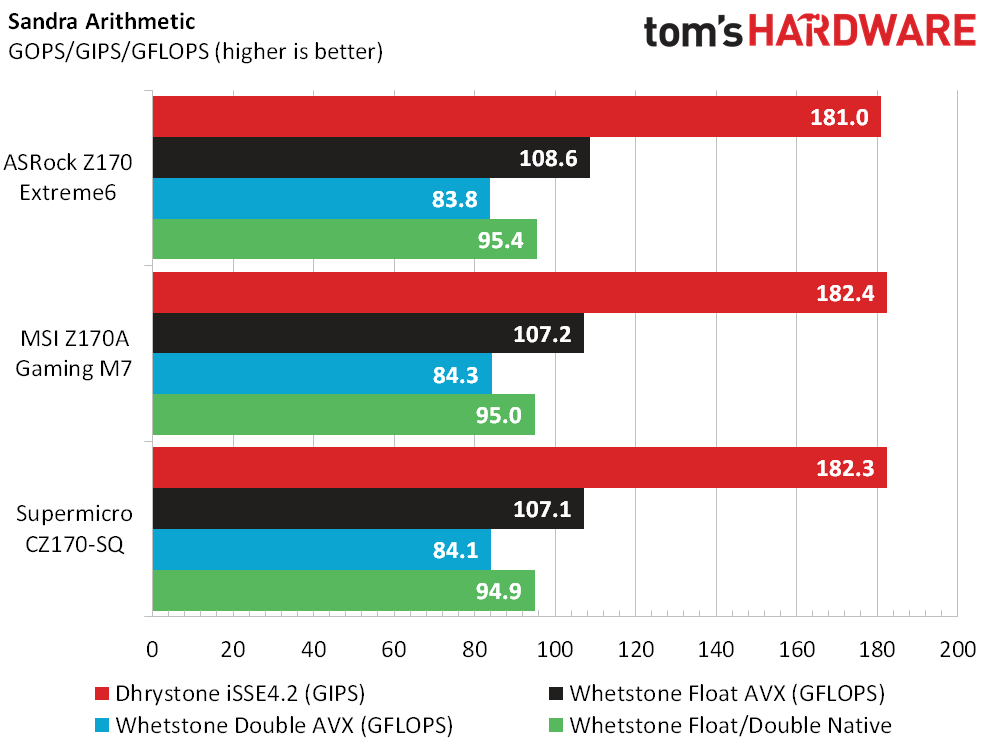
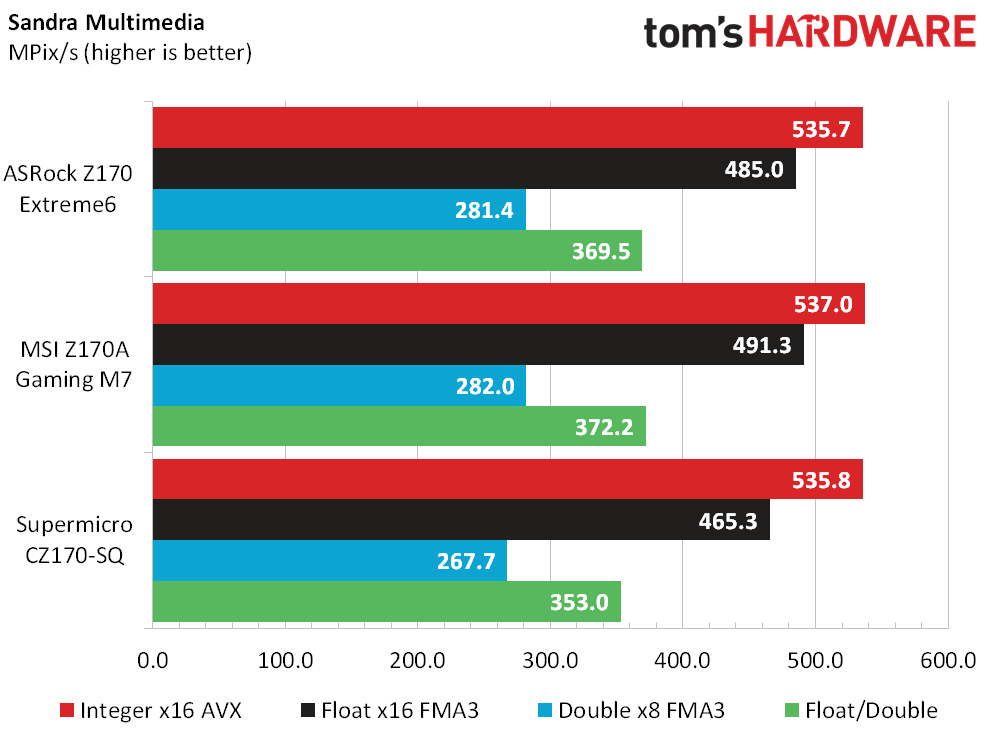
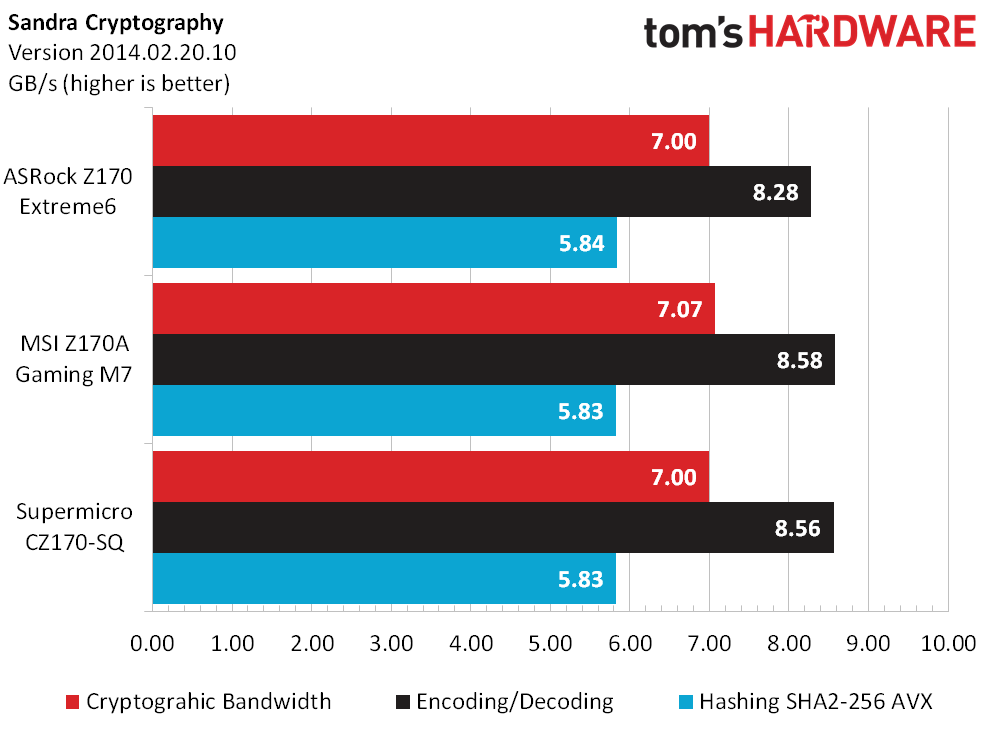

That small blip in the Cryptography module is caused by a small deficit in memory bandwidth. Perhaps ASRock was shooting for stability? Overclocking will help to determine that.
Gaming Benchmarks
All three boards look similar in games until we get to Far Cry 3. Several retests did not reveal the cause for performance differentiation in this one title, but the difference was small enough to negate the need for lengthier investigations. It is, after all, just one of the four games tested, and synthetics didn’t reveal a reason for the lowest-bandwidth board to have a 3D performance advantage.

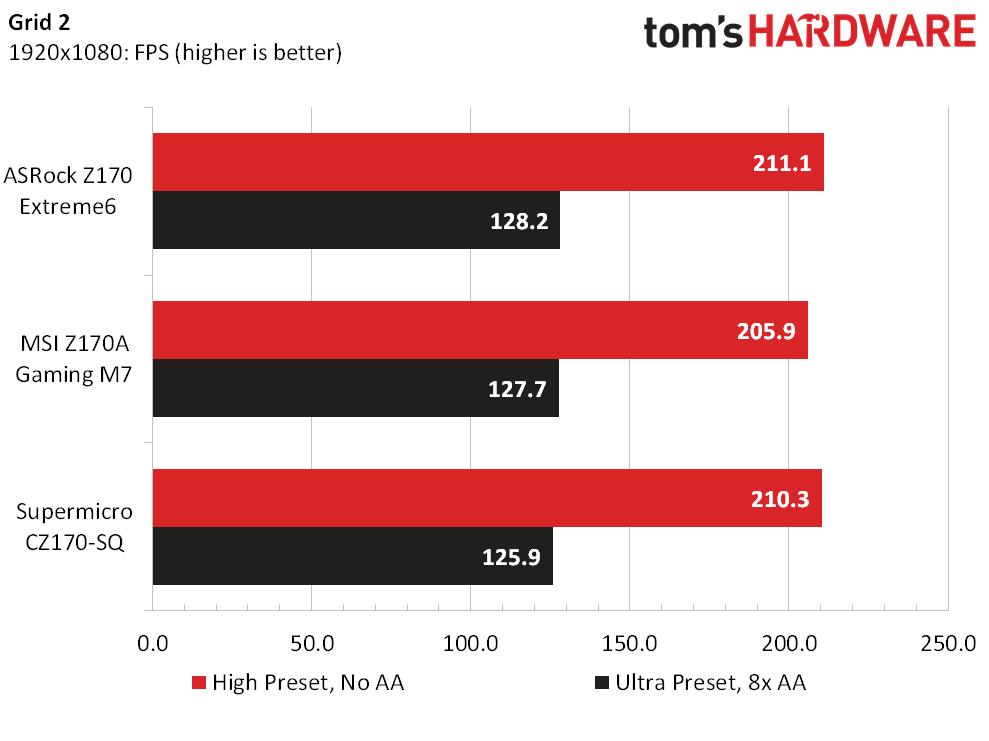
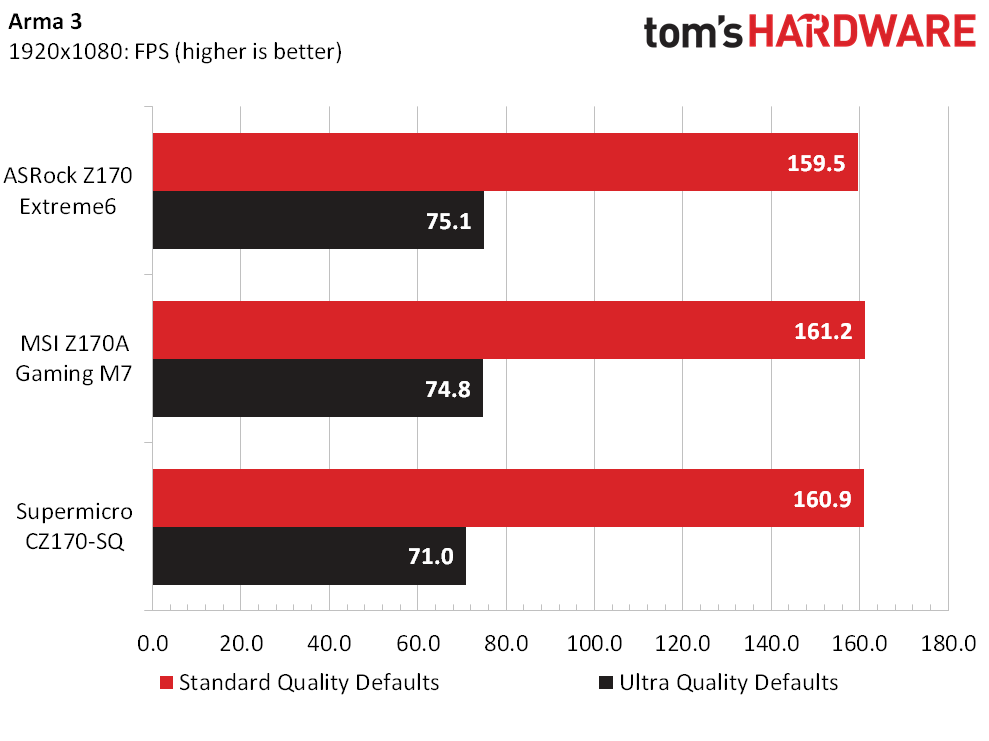
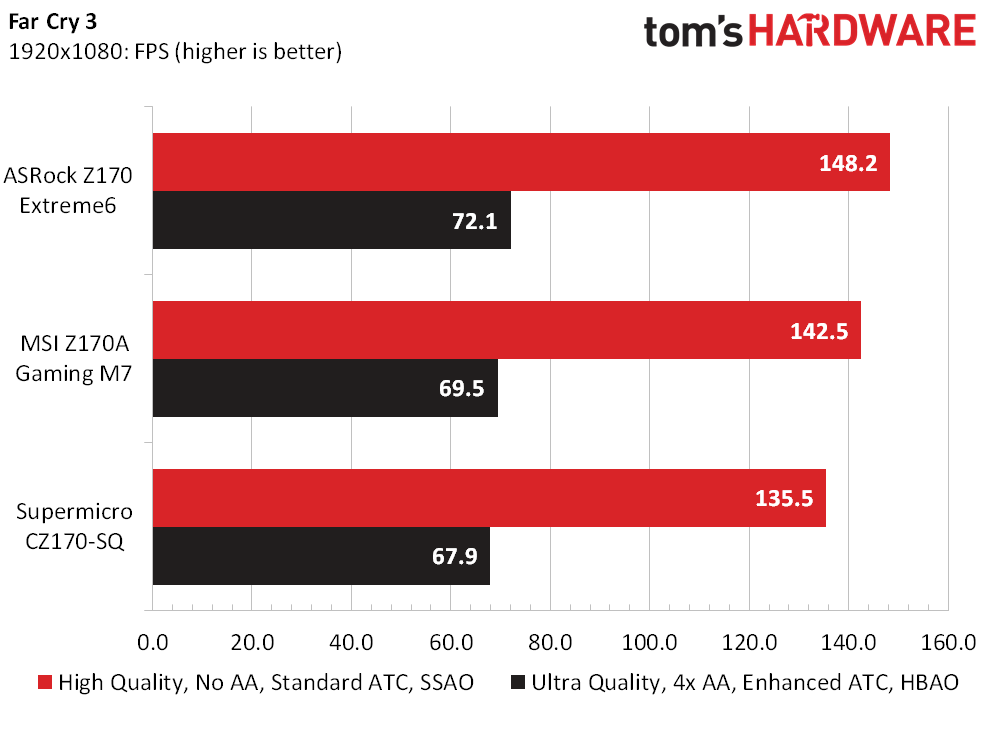
Non-Gaming Applications
Less time means more performance in timed benchmarks. The Z170A Gaming M7 takes a small lead in the A/V encoding suite, but nowhere else, and by not enough to make a noticeable difference overall.

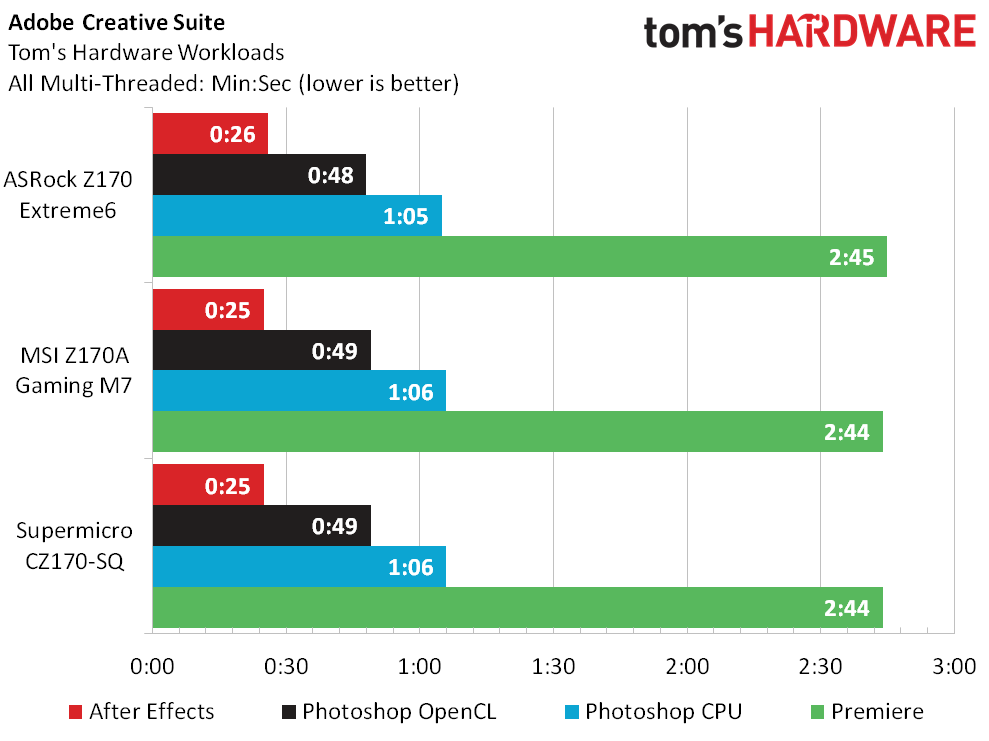


Power, Heat, And Efficiency
The C7Z170-SQ doesn’t have a bunch of added controllers, and it also has the lowest maximum and minimum power readings. The Z170 Extreme6 isn’t far behind, while the better-equipped Z170A Gaming M7’s extra components consume a little extra energy.
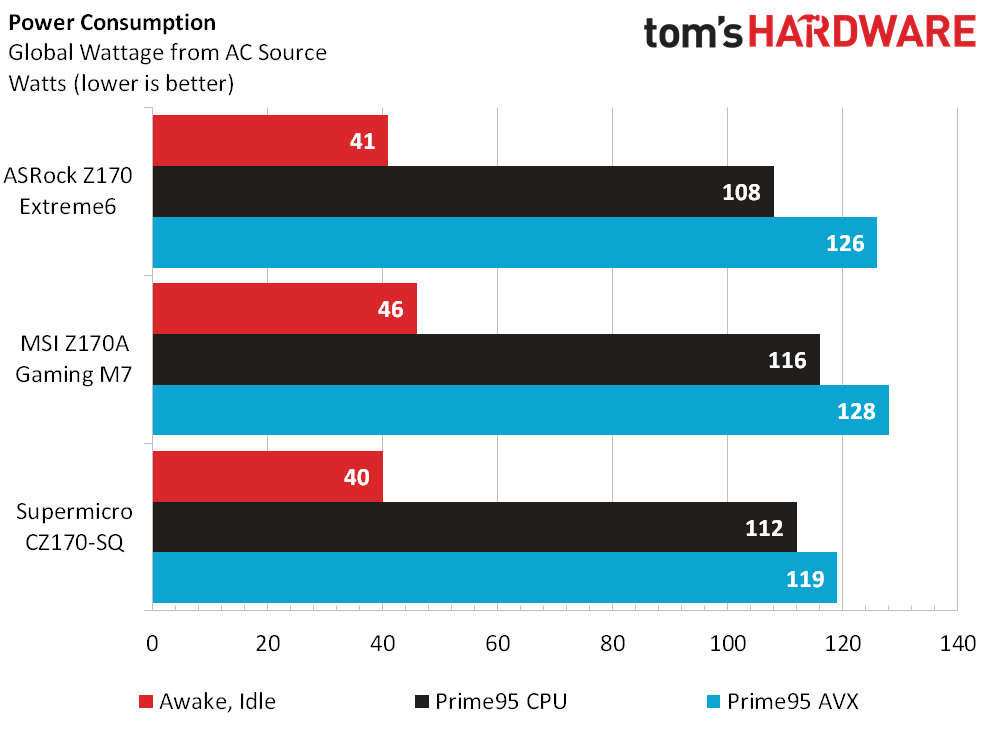



The result is a 2.5% efficiency lead against the average of all three motherboards for SuperMicro’s C7Z170-SQ. The Z170 Extreme6 takes second place, while the Z170A Gaming M7 is the part that pulls the entire class average for efficiency in the wrong direction.
Get Tom's Hardware's best news and in-depth reviews, straight to your inbox.
Current page: Benchmarks, Power, Heat And Efficiency
Prev Page Supermicro C7Z170-SQ Next Page Overclocking, Value And Final Analysis-
Crashman Reply
Read it again :-) Notice anything about capitalization?16403363 said:You i7 is two cores? XD
(Last paragraph of first page)
-
danlw Glad to see the Extreme 6 I bought from Newegg the other day fared well. Now, about i7 6700K US availability... amazon.DE and amazon.fr both showed the 6700k for sale yesterday... why is the 6700K (and 6600k) MIA in the US?Reply -
TechyInAZ Those motherboards are cool, looks great!Reply
No ASUS boards!!!
No GIGABYTE either!?? :D -
AdviserKulikov Tom's staff,Reply
Please get rid of the arrows covering the charts.
Thanks,
-The Readers -
Calculatron ASRock scores another victory!Reply
It's a shame that Asus and Gigabyte didn't send in a competing board.
(Dare I say anything about Biostar again?)
